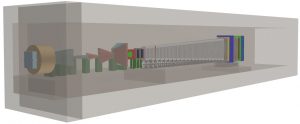Particle physics today is in a very particular situation: all particles of the Standard Model have been discovered, no super symmetric particle has been found at the LHC, and the mass value of the Higgs and top are such that the Standard Model could be a valid theory up to the Planck mass. On the other hand, it is also clear that the Standard Model is incomplete since it does not explain phenomena observed in particle physics, astrophysics and cosmology, such as, for example, why neutrinos have mass, why the universe consists of matter and not anti-matter, and what is the dark matter.
Finding answers to these questions is today the main purpose of particle physics. This aim can be pursued through the (direct or indirect) search for heavy particles or the search for light particles which couple very weakly with known particles and which, precisely for this reason, have not been seen so far.
This second way is the one pursued by the SHiP (Search for Hidden Particles) experiment, proposed to run at the Beam Dump Facility (BDF) at CERN and currently under evaluation by the European Strategy Update for Particle Physics.
The high intensity of the 400 GeV proton beam extracted from the SPS for the BDF will allow SHiP to probe a wide variety of models containing light long-lived particles, including light and weakly interacting states predicted by Supersymmetry, with a sensitivity several orders of magnitude greater than past or present experiments. Moreover, this proton beam intensity will allow interactions of tau neutrinos to be studied in detail, including the first direct experimental observation of the tau anti-neutrino.
 INFN-LNF Laboratori Nazionali di Frascati
INFN-LNF Laboratori Nazionali di Frascati
